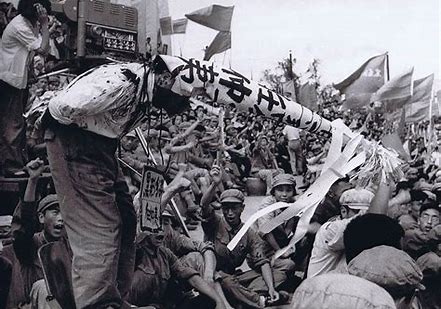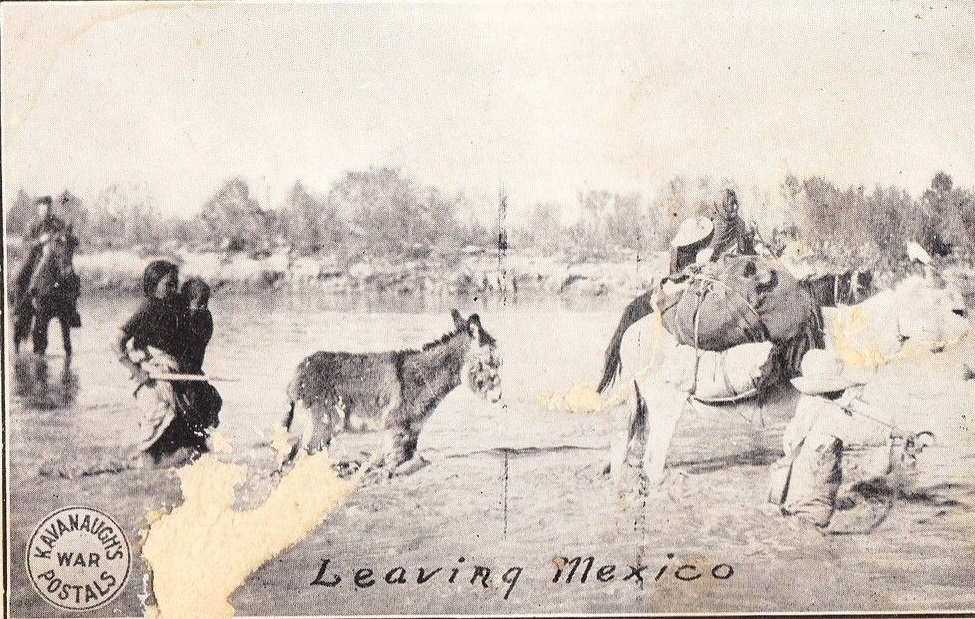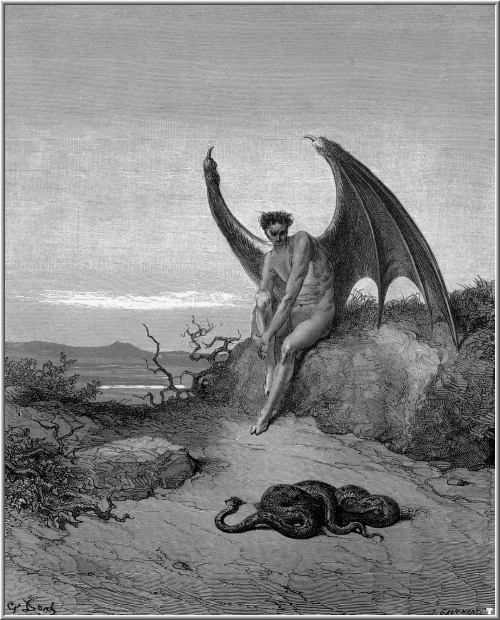For years we’ve been steered toward the old Soviet Union as the model of Marxism to either admire or hate in America. In the process very little notice has been given to Maoism and the rise of the cult of personality that surrounded the most violent and cruel decade, 1964-1974, in modern human history.
It was called the Cultural Revolution. But very little was known or written about it in real time, or the love affair by a whole generation of rampaging, educated Chinese youth, but their spiritual father, Mao Tse-Tung, who had held an entire nation of three-quarters of a billion people firmly in his grasp for a full generation, was able to guide their every waking moment from birth.
Hate for the sake of hate, violence for the sake of violence, was as easy as flipping a switch. Just give them a little red book and set them loose on the rest of society, and tell Party, military and people alike, Dear Leader says this must happen for the good of the Revolution.
Ayn Rand wrote about “hating the good because it is good” in this same period, referring to our American campus uprisings of that period. My essay on her essay has been one of my most popular, (first published in 2013). But she didn’t note China, and being Russian, perhaps, Miss Rand intentionally never mentioned any particular brand of Marx-Leninism. But while news about the Cultural Revolution was scanty at best, the Vietnam War and Cold War gathering far more media ink in America’s press, the Chinese and Russians were not in the best of terms, almost from the beginning, all because of a fine point in the true meaning of Marx-Leninism. Early on Mao accused Stalin of communist apostasy for directing their revolution toward industrial development instead of rural reform.
So, all during the Vietnam War, while both Soviets and China leant support to the North Vietnamese, still there were regular fire-fights all along the Soviet-Chinese border which had been going on almost from the beginning, in 1945.
Only about the evil United States did they put up a solid front.
But we knew about those firefights because of high-tech listening posts at Chitose, in far northern Japan. A friend of mine, now passed, was an Intel officer there.
About the Cultural Revolution in China proper it was mostly speculation, at least in real time. The largest listening post in the Far East, by far, was Hong Kong, which ironically probably enjoyed its best days as a commercial center during that period, before it was finally returned to China by Britain in 1997.
I lived in Japan for three years of the Cultural Revolution, 1972-1975, so got to travel to Hong Kong from time to time. It was the most vibrant city in Asia despite being just 100 miles downriver from Canton (Guangzhou) where people were being rounded up and gunned down by student gangs of revolutionaries. Hong Kong was the most popular shopping destination in the world. Yes, there were refugees, but they were settled in the New Territories a few miles north. A walking tour of Kowloon or Hong Kong Island would find no sign of anything ugly about Maoism or communism in general.
Hong Kong was not just a shopping mecca, especially for exotic Asian products, but it was also a bargain hunter’s paradise, because Chinese vendors just loved to see if they could skin their customers. And they loved to haggle in the most expressive ways, “Aieyah!”, that left a memory with every encounter. I was told by old hands that shopkeepers usually asked about 40% more than what they would expect, so counteroffer 50% just to have an interesting haggle. On the one time I took her to Hong Kong with me, my wife was asked by her mother to get an embroidered sweater. We found a shop, she found the sweater, asked the price, and the fellow said 150HK dollars, which she calculated to USD, and knowing it was well below Bloomindales, so said fine and started rummaging thru her purse. I tried to say Whoa! “You’re shaming us. This guy will think we’re from Iceland. No on pays fixed price except Japanese…and do we look Japanese?” She would have none of it. It made her uncomfortable. Said it was de classe to haggle. End of story.
But one lesson we quickly learned was that before you go out on a long day of shopping, visit the ChiCom store first just to compare prices. They were fixed price. Communist China had two stores in Kowloon in those days. One was few blocks north from our hotel, the Sheraton, which in ’74 was actually on the Harbor front. But the best was down near the Star Ferry which took people across to the island. Every thing you could want with a Chinese flair; rosewood furniture, (nothing Western), clothing and accessories, shoes, sandals, scarfs, rugs. All at fixed price. My wife loved it.
But so did I, for the ChiCom store had the Glorious Cultural Revolution, at least the “glorious” part of full propaganda on display. 1500 sq ft of propaganda, shelf after shelf of books in almost every language, large wall posters, and smaller 8 x10’s, of Mao, with and without halos,

Just Google “Mao Cultural Revolution: then click “Images” to get a full view of what was on every street corner and public building in China for 10 years. They were printing so many, I was still buying them the last time I visited HK in 2008.
Most of all, they had shelf after shelf of Mao’s Quotation’s, the Little Red Book, in every language in the world, all with a red vinyl cover. About a buck. And I got one in English, Sanskrit Urdu, Arabic, Russian, and one other. The one in English I gave my oldest son a few years back, and I had underlined , “correcting mistaken ideas” and the “mass line”, which were principal purposes of the Revolution in the first place…to imbue these simple phrases into the minds of students, then loose them on the people.


I’m a little skeptical of post-Mao histories of that period, especially about his mental state, simply because there were no reliable western reporters on the scene there then, just as there are no reliable western reporters on the scene in America today. And few if any surviving Chinese will tell a “foreign devil” any secrets about things that are personally Chinese. It just isn’t done.
What we know is that Mao sicced millions of young students on the rest of country to bring about a spiritual revival of his Revolution, in the process deifying himself. By 1964 he was 71 and the economic plans he had made had all failed. Mao had birthed his new China for over a generation, in ways that Stalin never could claim. He spent two years with his army on the Long March (1934-35) into the northwestern Chinese hinterlands, then 15 years of civil war with Chiang Kia-shek, before finally claiming all of China in 1949. Stalin, who was a front office clerk, had never formed that sort of association with his people or his military leaders.
So by 1964 there were millions of young people who had never known any other leader but Dear Leader. He was a god. It didn’t matter if he knew he wasn’t, the reality is that he was a living god to millions of what we would call millennials today who had been raised on a diet of Mao, Mao, Mao, from childhood. What they were taught, in a short version, is found in that Little Red Book.
“Correcting mistaken ideas”, “The mass line”.
Mao eventually lost his mind, died in 1976, and was replaced as Dear Leader by Deng Zhiao-ping (the way I always spelled it), who had twice been purged and imprisoned by the Cultural Revolution, but survived to return to lead the post-Mao China out of the mess Mao had created.
40 million dead going in, a few million dead coming out, (no one knows) perhaps many of those rampaging students among them, (think of a years-long Night of the Long Knives purge, much like the Nazis in ’34) who would be in their 70s today, had they survived.
Deng did a helluva job bringing China back to the road Mao hated most, commercial market growth alongside industrial and agrarian expansion. But in the end, in order to hold onto Party control, and save face of the Party, the reformers had to continue to deify the man who had created the mess, in order to do so.
Modern corporate China will always do what it can get away with. And has gotten away with a lot since Mao died. That seems to be changing. Their military ambitions are in the open, and everyone knows. But right now, at least, they’re getting away with less.
China’s greatest bequest to the West isn’t anything culturally Chinese, but rather the significance of being able, cradle-to-grave, to create a society of educated automatons who will march to the beat of a demigod’s drum.
In America, the institutional craft of creating such an army is almost complete. But unlike Chinese kids who confronted Chinese citizens who were unarmed, such an assault tactic would be more problematic in America. And as yet they do not have a genuine cult leader like Mao. Or even Elvis.
No, Donald Trump isn’t that guy. Trump has many cult-like followers, but he got into the game at his age specifically to avoid self-delusional dreams of grandeur. He’s too old to be able to seduce himself. (I know, I’m 4 months older.)
But compare the cult-followers of Trump, who might number in the hundreds of thousands, tops, and the many millions of Hate cultists, courtesy of American schools, wandering around like zombies, wanting to break, even kill something. So far they have no god to give them marching orders.
We need to pay more attention to this in America. Stay to the right. bend not an inch for the old school Marxist Left, and demand at least 30 more years, not four, not eight, but 30, to correct these flaws in our culture, so as to find and destroy this cult of hate in their breeding grounds.
The Chinese? Sadly, to be truly free they may have to go thru it all over again.
So watch Hong Kong as to how they will proceed.




